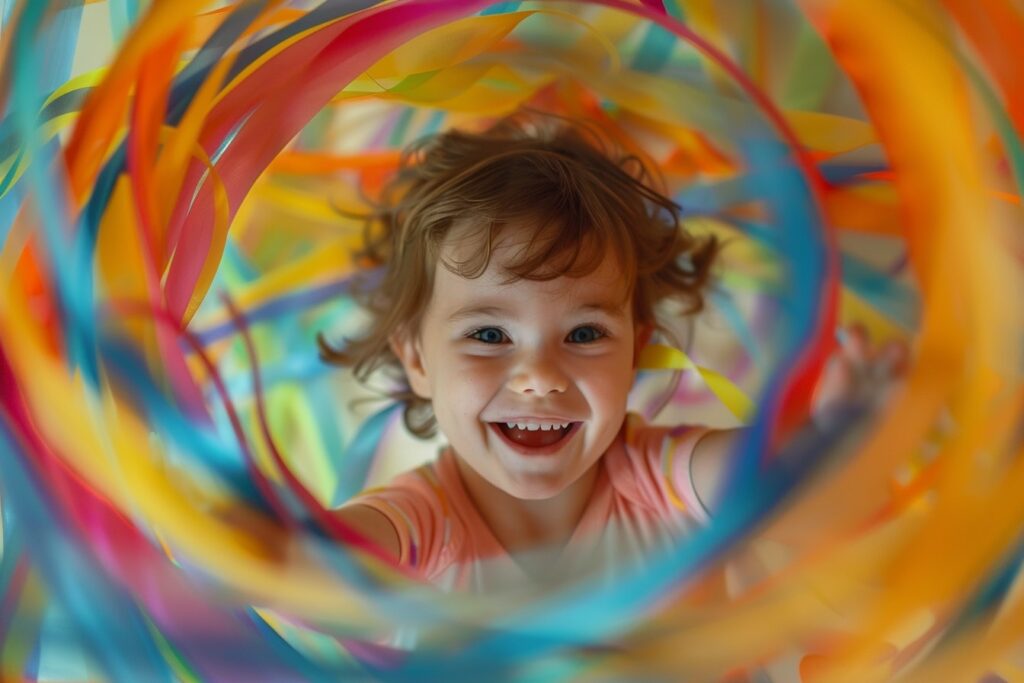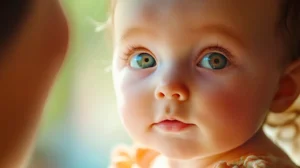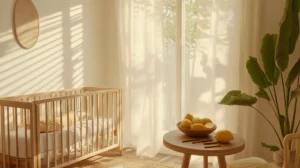Table of Contents
ToggleMusic and Movement: Enhancing Cognitive Growth Through Rhythm
Picture this: It’s a sunny afternoon in the heart of the Caribbean, where the rhythm of life pulses through every street corner and village square. As a parent, you find yourself immersed in the vibrant tapestry of Caribbean culture, where music and movement are not just activities but a way of life.
From the lively beats of reggae to the sensual sway of salsa, the Caribbean is a melting pot of rhythms and melodies that have shaped generations. But beyond the infectious tunes and spirited dances lies a profound truth: music and movement hold the key to unlocking a child’s full potential.
Having grown up surrounded by the rich sounds and rhythms of her Caribbean heritage, I’ve witnessed firsthand the transformative power of music and movement in shaping young minds. From the moment a child takes their first steps to the joyous expression on their face as they clap along to a catchy tune, it’s evident that there’s something magical about the connection between rhythm and cognitive development.
But why is this connection so powerful? What is it about music and movement that captivates the hearts and minds of children, transcending cultural boundaries and language barriers?
In this blog post, we’ll embark on a journey to explore the science behind this phenomenon, delving into the intricate workings of the brain and uncovering the profound impact that music and movement have on cognitive growth. Along the way, we’ll address common concerns, share practical tips, and celebrate the joys of parenting in a rhythm-infused world.
So, grab your maracas and put on your dancing shoes, because we’re about to embark on a rhythmic adventure like no other!
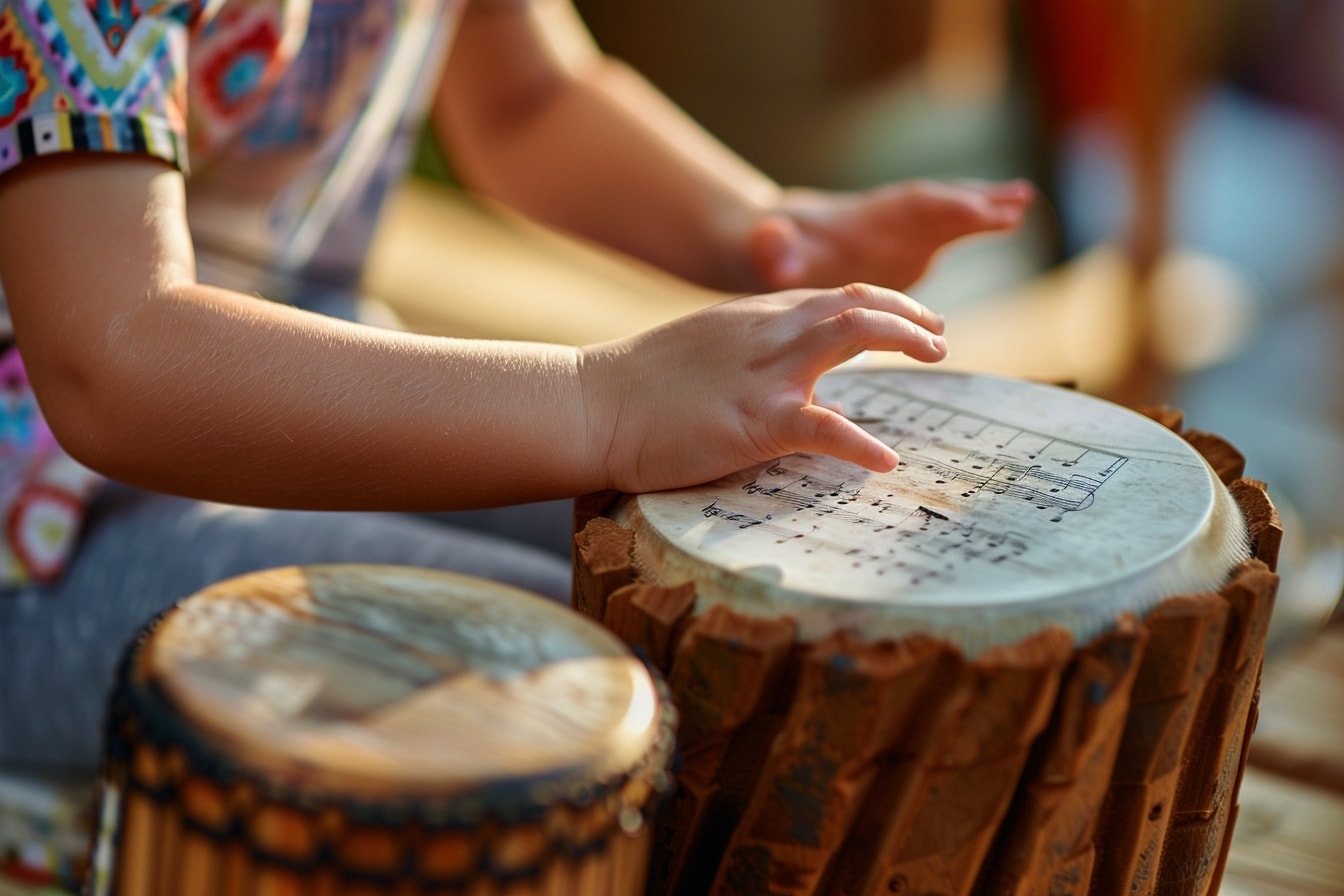
The Rhythmic Brain: Understanding the Science Behind Music and Movement
Have you ever noticed how a catchy tune can instantly lift your mood or how tapping your feet to a rhythmic beat seems to synchronize your thoughts? It’s not just a coincidence – there’s a fascinating science behind the way our brains respond to music and movement.
At the heart of this phenomenon lies the intricate dance of neurons and neurotransmitters within our brain, orchestrating a symphony of sensory experiences and emotional responses. Research has shown that when we listen to music or engage in rhythmic activities like dancing or drumming, multiple regions of our brain light up in harmony.
- The auditory cortex: This region processes sound and rhythm, allowing us to perceive and interpret musical melodies and beats.
- The motor cortex: Responsible for planning and executing movement, this area of the brain becomes activated when we engage in physical activities like dancing or playing an instrument.
- The limbic system: Often referred to as the emotional brain, this complex network of structures governs our feelings and memories, imbuing music with its profound emotional resonance.
But it doesn’t stop there. Studies have shown that rhythmic activities stimulate the release of neurotransmitters like dopamine and serotonin, which play key roles in regulating mood, attention, and motivation. This biochemical cascade not only enhances our enjoyment of music and movement but also fosters a sense of connection and well-being.
Moreover, rhythmic activities have been found to promote neuroplasticity – the brain’s remarkable ability to reorganize itself and form new neural connections. This means that engaging in musical experiences from an early age can have long-lasting effects on cognitive development, including improvements in memory, language skills, and executive function.
But perhaps the most intriguing aspect of the rhythmic brain is its capacity to synchronize with others, forging bonds of social cohesion and collective identity. Whether it’s swaying to the rhythm of a traditional folk song or participating in a drum circle with friends, communal music-making has been a cornerstone of human culture for millennia.
As parents, understanding the science behind the rhythmic brain empowers us to harness the transformative power of music and movement in our children’s lives. By nurturing their innate musicality and fostering a love for rhythmic expression, we not only enrich their cognitive development but also cultivate a lifelong appreciation for the beauty of sound and motion.
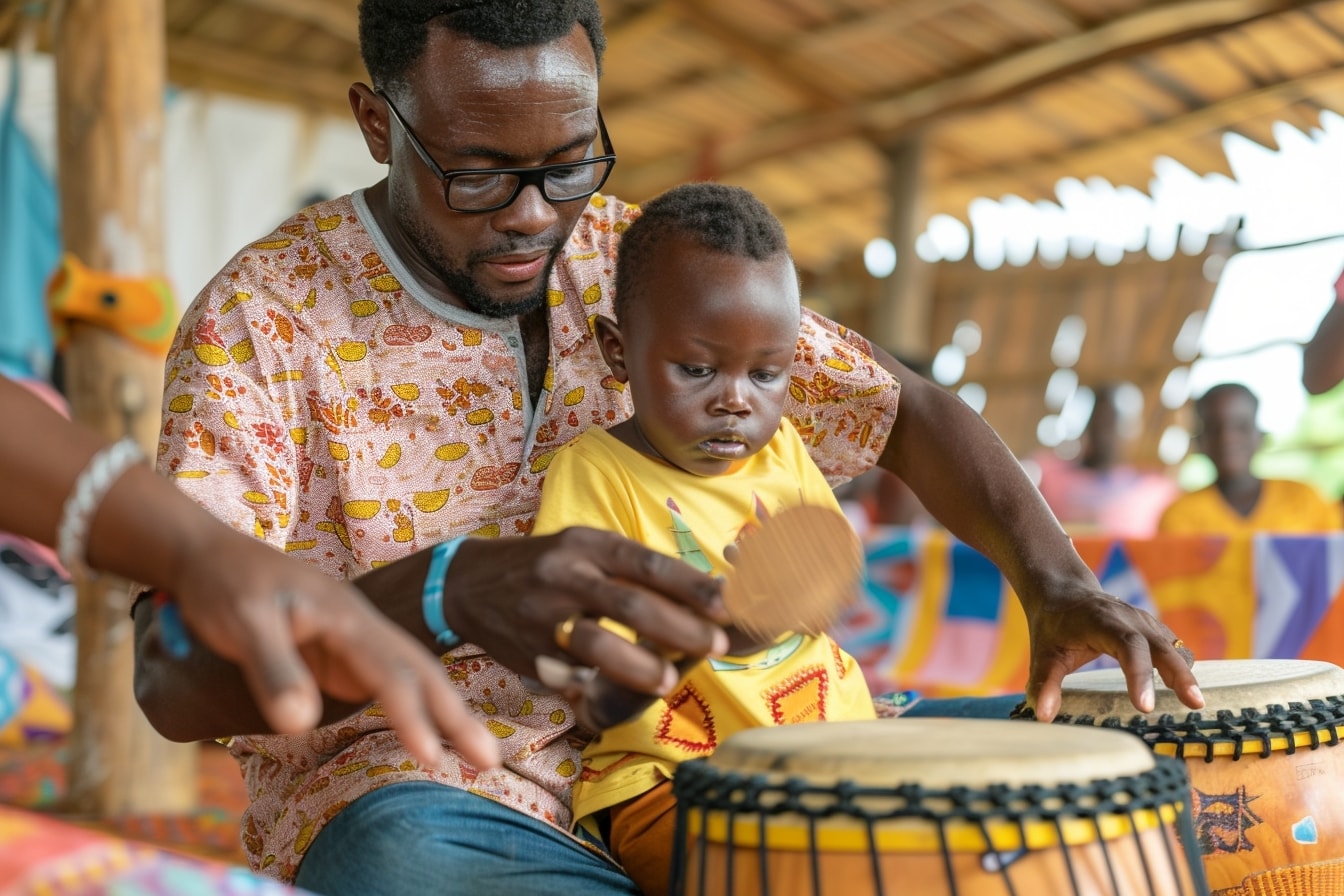
Overcoming Challenges: Addressing Common Concerns About Music and Movement
While the benefits of incorporating music and movement into a child’s routine are undeniable, it’s natural for parents to have concerns and reservations. From worries about safety to fears of disrupting established routines, there are several common challenges that may arise when introducing rhythmic activities into family life.
- Safety concerns: One of the most common worries parents have is whether rhythmic activities are safe for their child. From concerns about potential injuries during dance or play to worries about exposure to loud music, safety is paramount. However, with proper supervision and age-appropriate activities, many of these concerns can be addressed. For example, parents can create a safe space for movement activities by clearing away obstacles and using child-friendly instruments that pose minimal risk.
- Resistance to change: Introducing new activities into a child’s routine can sometimes be met with resistance, especially if they’re accustomed to a certain way of doing things. Parents may worry that their child will reject or resist music and movement activities, disrupting the family dynamic. However, by gradually introducing rhythmic activities in a fun and engaging manner, parents can help their child develop a positive association with music and movement. For instance, incorporating music into daily routines like mealtime or bath time can make it feel like a natural part of their day.
- Perceived lack of time: In today’s fast-paced world, many parents may feel overwhelmed by competing demands on their time, making it challenging to prioritize activities like music and movement. However, it’s essential to recognize that even brief moments of rhythmic play can have significant benefits for a child’s development. By finding creative ways to integrate music and movement into everyday activities, such as singing songs during car rides or having impromptu dance parties in the living room, parents can make the most of even the busiest schedules.
- Concerns about cultural relevance: In multicultural communities like the Caribbean, parents may worry about whether the music and movement activities they introduce to their child align with their cultural heritage. There may be concerns about cultural appropriation or the loss of traditional practices in favor of mainstream trends. However, by actively seeking out music and movement activities that celebrate Caribbean culture and traditions, parents can ensure that their child’s experiences are culturally rich and meaningful. Whether it’s learning traditional dances like the merengue or exploring Caribbean rhythms through music classes, there are countless ways to embrace and honor cultural heritage through rhythmic activities.
By acknowledging and addressing these common concerns, parents can feel more confident and empowered to incorporate music and movement into their child’s life. With patience, creativity, and a willingness to adapt, parents can overcome obstacles and create a nurturing environment where their child can thrive and grow through the power of rhythm.
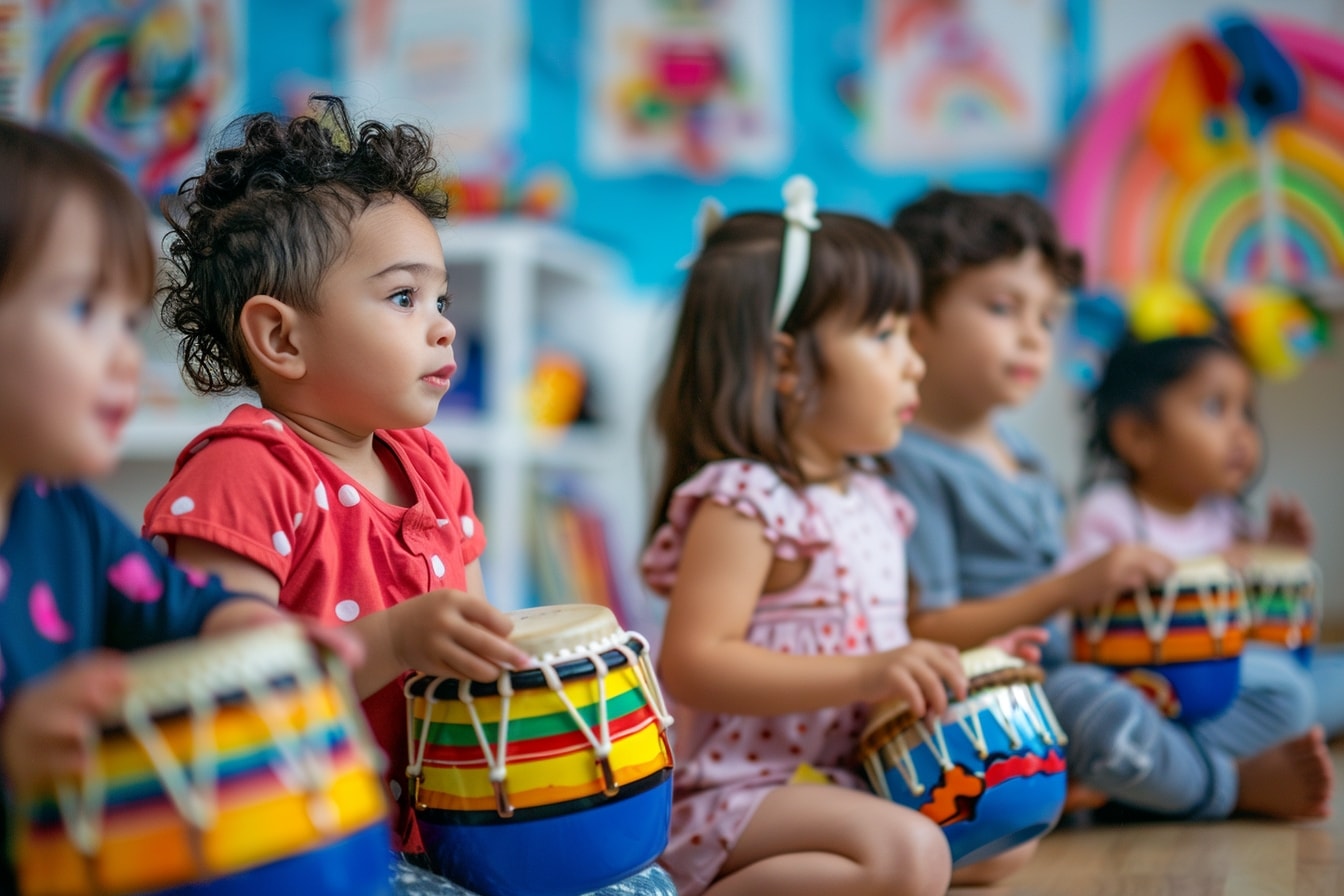
Trends in Early Childhood Education: Integrating Music and Movement Into Learning Environments
As we continue to unlock the mysteries of child development, educators and parents alike are recognizing the profound impact that music and movement can have on early learning. In recent years, there has been a notable shift in early childhood education towards embracing these rhythmic experiences as integral components of the learning environment.
- Whole-child approach: One of the key trends in early childhood education is a shift towards a holistic, whole-child approach that recognizes the interconnectedness of physical, emotional, and cognitive development. Educators are increasingly incorporating music and movement into their curriculum not only as enrichment activities but as essential tools for nurturing a child’s overall well-being. By engaging the body, mind, and spirit through rhythmic experiences, children are better equipped to explore and understand the world around them.
- Play-based learning: Another trend gaining momentum in early childhood education is the emphasis on play-based learning as a means of fostering creativity, curiosity, and critical thinking skills. Music and movement naturally lend themselves to playful exploration, providing children with opportunities to express themselves, collaborate with peers, and problem-solve in a supportive and stimulating environment. Through activities like musical games, dance improvisation, and instrument exploration, children can develop essential skills such as communication, teamwork, and self-regulation.
- Integration of technology: In today’s digital age, technology has become an increasingly prevalent tool in early childhood education. Educators are harnessing the power of digital platforms and interactive apps to enhance music and movement experiences in the classroom. From virtual dance tutorials to interactive music-making software, technology offers endless possibilities for engaging and enriching rhythmic activities. By leveraging these digital resources thoughtfully, educators can cater to diverse learning styles and provide children with dynamic and immersive learning experiences.
- Cultural relevance and diversity: As our understanding of diversity and inclusion evolves, there is a growing recognition of the importance of incorporating diverse cultural perspectives into early childhood education. In multicultural communities like the Caribbean, educators are embracing music and movement as powerful tools for celebrating cultural heritage and promoting cross-cultural understanding. By introducing children to a wide range of musical genres, dance traditions, and cultural practices, educators can foster empathy, respect, and appreciation for diversity from an early age.
By staying attuned to these emerging trends and embracing the transformative power of music and movement, early childhood educators are laying the foundation for a lifetime of learning and growth. Through thoughtful integration and creative exploration, they are shaping a generation of young minds who are not only academically prepared but emotionally resilient, socially adept, and culturally aware.
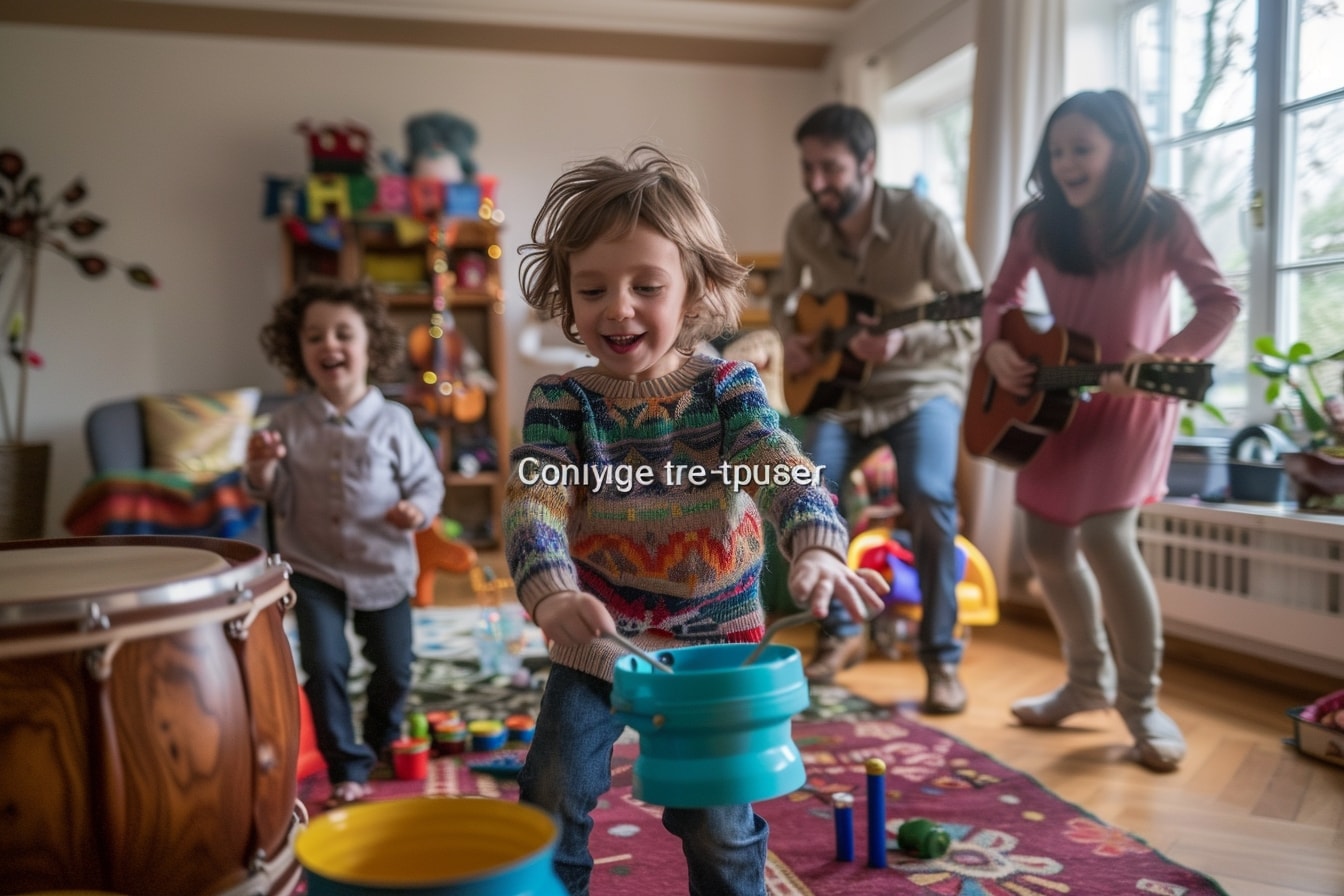
Practical Application: Incorporating Rhythmic Activities Into Daily Life
Now that we’ve explored the fascinating science and trends behind music and movement in early childhood development, it’s time to roll up our sleeves and get practical. How exactly can parents integrate rhythmic activities into their child’s daily routine, amidst the hustle and bustle of everyday life? Let’s dive in and discover some creative strategies for making rhythm a seamless part of family life.
- Create a rhythmic routine: Just as we have daily rituals like brushing our teeth or reading bedtime stories, incorporating rhythmic activities into a daily routine can help make them feel like a natural part of the day. Whether it’s starting the morning with a sing-along session, taking a midday dance break, or winding down with a lullaby before bedtime, establishing a rhythmic routine can provide structure and consistency while fostering a love for music and movement.
- Make everyday tasks musical: Who says chores have to be dull and boring? Turn mundane tasks like tidying up or cooking dinner into musical adventures by adding a soundtrack to your activities. Put on some upbeat tunes and encourage your child to dance while helping with chores, or turn folding laundry into a rhythm game by clapping along to the beat. By infusing everyday tasks with music and movement, you’ll not only make them more enjoyable but also stimulate your child’s senses and creativity.
- Embrace spontaneous moments: Rhythm is all around us, waiting to be discovered in the most unexpected places. Take advantage of spontaneous opportunities for musical exploration, whether it’s tapping out rhythms on pots and pans in the kitchen, making music with found objects in the backyard, or singing impromptu songs during car rides. By embracing these spontaneous moments of musical play, you’ll cultivate a sense of joy and wonder that transcends structured activities.
- Cultivate a musical environment: Surround your child with music and movement by creating a stimulating and sensory-rich environment at home. Fill your space with musical instruments, such as drums, shakers, and xylophones, and encourage your child to explore and experiment with sound. Decorate your walls with colorful posters depicting different musical genres or cultural traditions, sparking curiosity and conversation. And don’t forget to incorporate movement-friendly furniture, such as soft mats or bean bags, to encourage active play and exploration.
By incorporating these practical strategies into your daily life, you’ll not only enrich your child’s development but also create lasting memories of joy, laughter, and togetherness. So, let’s turn up the music, kick off our shoes, and embark on a rhythmic adventure like no other!
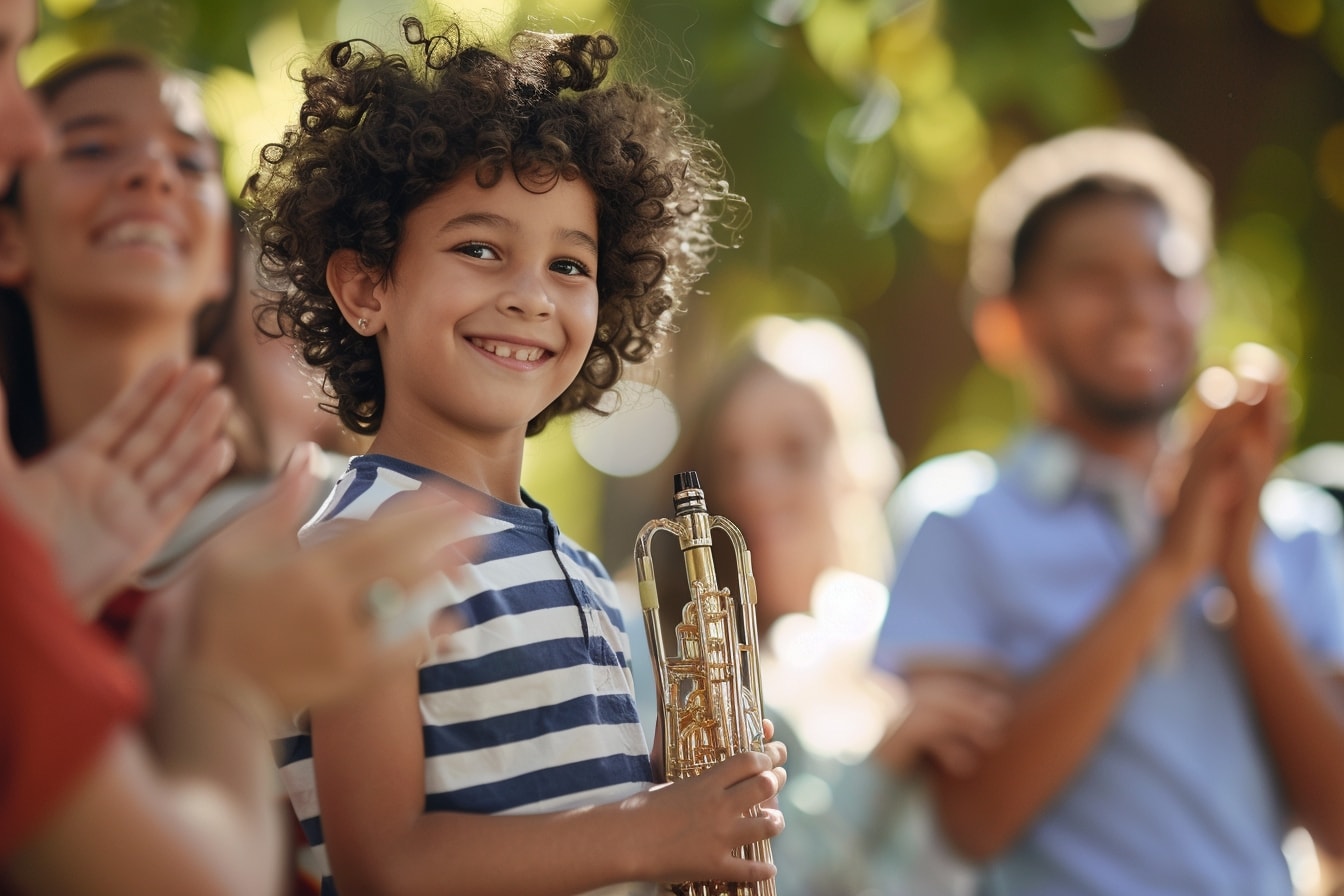
Celebrating Progress: Recognizing Milestones and Growth Through Music and Movement
As parents, few things bring us greater joy than witnessing our children’s growth and development unfold before our eyes. From their first tentative steps to their confident dance moves, every milestone reached is a cause for celebration – and what better way to mark these moments than through music and movement?
- Creating a culture of celebration: In our fast-paced lives, it’s easy to overlook the small victories and achievements that make up our children’s journey. That’s why it’s essential to intentionally create a culture of celebration in our homes, where every milestone – no matter how big or small – is acknowledged and celebrated. Whether it’s learning a new dance step, mastering a musical instrument, or simply expressing themselves through rhythm and movement, every moment of progress deserves to be recognized and celebrated.
- Documenting milestones: One of the most meaningful ways to celebrate progress is by documenting and commemorating milestones as they occur. Whether through photos, videos, or written reflections, capturing these moments not only preserves precious memories but also provides a tangible reminder of how far our children have come. Create a milestone journal where you can jot down anecdotes, record observations, and paste in photos or artwork related to your child’s musical and movement journey. Not only will this serve as a cherished keepsake for years to come, but it will also provide valuable insights into your child’s growth and development over time.
- Sharing success stories: Celebrating progress doesn’t have to be a solitary affair – it’s an opportunity to share the joys and triumphs of parenthood with friends, family, and the wider community. Whether through social media updates, family gatherings, or parent-teacher conferences, take pride in sharing your child’s success stories and milestones with others. Not only does this foster a sense of connection and support, but it also inspires and uplifts others who may be on a similar journey.
- Reflecting on the journey: Finally, take time to pause and reflect on the journey of parenthood and the role that music and movement have played in your child’s development. Celebrate not only the tangible milestones reached but also the intangible moments of connection, growth, and discovery along the way. Whether it’s reminiscing about the first time your child danced to their favorite song or reflecting on the joy of making music together as a family, savor these precious moments and let them serve as a reminder of the transformative power of rhythm and melody in our lives.
By celebrating progress and recognizing milestones through music and movement, we not only honor our children’s achievements but also cultivate a sense of pride, confidence, and self-expression that will serve them well throughout their lives. So let’s raise our voices, clap our hands, and dance to the rhythm of parenthood – because every moment of progress is a reason to celebrate!
As our rhythmic journey comes to a close, let’s take a moment to reflect on the melodies and movements that have woven their way into the fabric of our lives. From the soothing lullabies that calmed restless nights to the joyful dances that filled our hearts with laughter, music and movement have been steadfast companions on our parenting odyssey.
Throughout this exploration, we’ve delved into the science behind the rhythmic brain, unpacked emerging trends in early childhood education, and discovered practical strategies for integrating music and movement into daily life. We’ve celebrated the milestones and progress of our children, recognizing the profound impact that rhythm and melody have on their growth and development.
But beyond the practicalities and strategies lies a deeper truth: music and movement are not merely activities but gateways to connection, expression, and joy. They are the language of the soul, transcending barriers of age, culture, and circumstance to unite us in a shared experience of rhythm and harmony.
As we bid farewell to this rhythmic adventure, let us carry forward the lessons and insights we’ve gained, infusing our homes with the magic of music and movement. Let us continue to celebrate the small victories and cherish the precious moments of connection with our children, knowing that every beat, every step, brings us closer together.
And so, dear readers, I invite you to embrace the rhythm of parenthood with open arms and open hearts. Let us dance to the melodies of love, laughter, and learning, knowing that in the dance of life, every step is a celebration of the journey itself.
Thank you for joining me on this rhythmic adventure. Until we meet again, may your days be filled with music, movement, and moments of pure magic.
Want to take your knowledge to the next level? Check out these must-read articles:
- The Science of Sleep: How Rest Supports Baby’s Brain Development
- The Power of Encouragement: Boosting Confidence in Baby
Organize your baby’s wardrobe with our baby clothes closet organizer products! Our organizers are designed specifically for baby clothes. Get your baby’s clothes neat and tidy with our selection of organizers – shop now!
Step into Sue Brown's World of Baby Care, where you'll find a treasure trove of knowledge and wisdom waiting to be explored. Sue's dedication to providing accurate and up-to-date information on baby care shines through in every article, blog post, and resource she shares. From newborn essentials to sleep training tips, breastfeeding advice to nurturing your baby's development, Sue covers a wide range of topics that are essential for every parent to know. Her warm and compassionate approach creates a sense of community and reassurance, making her website a safe haven for parents seeking guidance and support. Let Sue Brown be your partner in this beautiful journey of parenthood, as she empowers you to create a loving, nurturing, and thriving environment for your little one.
- Indoor Air Quality for Infant Respiratory Health - October 20, 2025
- Positive Discipline Foundations: Setting the Stage From Infancy - October 18, 2025
- 2025’s Most Innovative Baby Products Worth the Investment - October 16, 2025
Other Great Posts:
- How to help your baby cope with frustration and setbacks by using positive selftalk and affirmations
- How to use growth mindset language with your baby, such as not yet instead of can’t
- How to use growth mindset interventions to prevent and address learning difficulties and disabilities in your baby
- Teaching Perseverance Through Potty Training: A Growth Mindset Perspective

